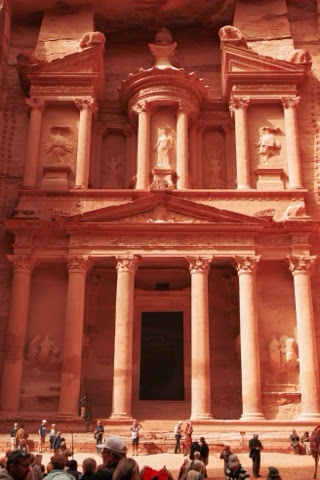Through a narrow path carved in the rock by wind and water, we walked.
Passing man made carvings and an aqueduct system that lined the 2 mile walkway, we wound our way until behold, through an opening we spotted...
the Treasury Building. This hallmark of the Petra ruins was once believed to hold great treasures associated with the dead king buried there.
Continuing through the rocky trail, we passed many buildings that had been carved into the stone by the Bedal people well before the birth of Christ.
Once a premier trade centre for the Middle East, Petra was abandoned in favour of other routes about 1900 years ago. The ruins were covered by sand until the nineteenth century when a European explorer discovered them. Extensive work has been done to restore the site, but to date most of Petra has not been unearthed.
Many of the famous ruins are tombs carved into the rock to honour respected rulers. The houses of original Petra inhabitants no longer exist at this site.
Petra is called 'the Rose City' because of the unique colouring of it's rock.





No comments:
Post a Comment